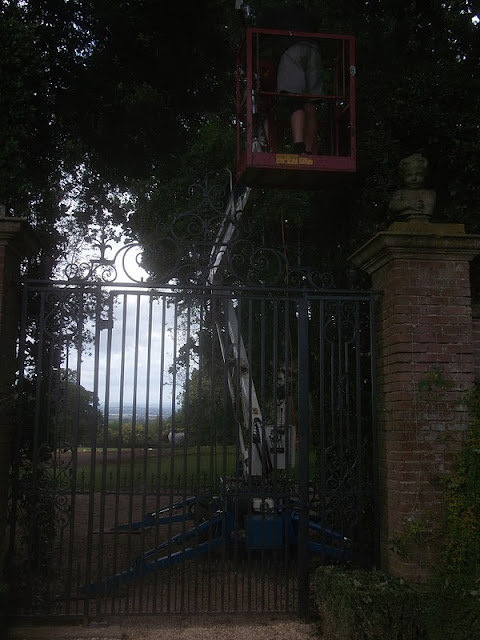The hedge cutting season is well underway here at Hidcote, with us going on strong for about six weeks now. There is actually around four and a half miles of hedging to get through, so we have a jolly hard time of it at this time of year I can tell you! This massive undertaking deserves a post in itself, and I’ll come to that shortly. For now here are some aerial shots taken from the cherry-picker, a noisy mechanised beast we have to wheel out when we’re cutting all of the tall and awkward hedges about the place. Not too long ago they used to use ladders, but of course those treacherous dogs in health & safety soon put pay to this practicality! So here we are from the cherry-picker, in position to cut the Hornbeam Stilts, overlooking the Red Borders.
 |
| The yew hedge between the Theatre Lawn and Red Borders, looking toward the manor and the ancient Cedrus libani |
 |
| Red Border gazebo view |
 |
| Gazebo Long Walk view |
 |
| The cherry-picker in action at Heaven’s Gate |

































